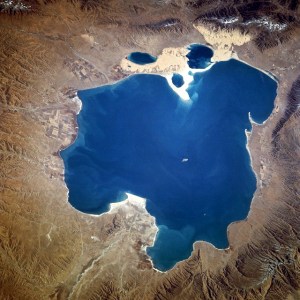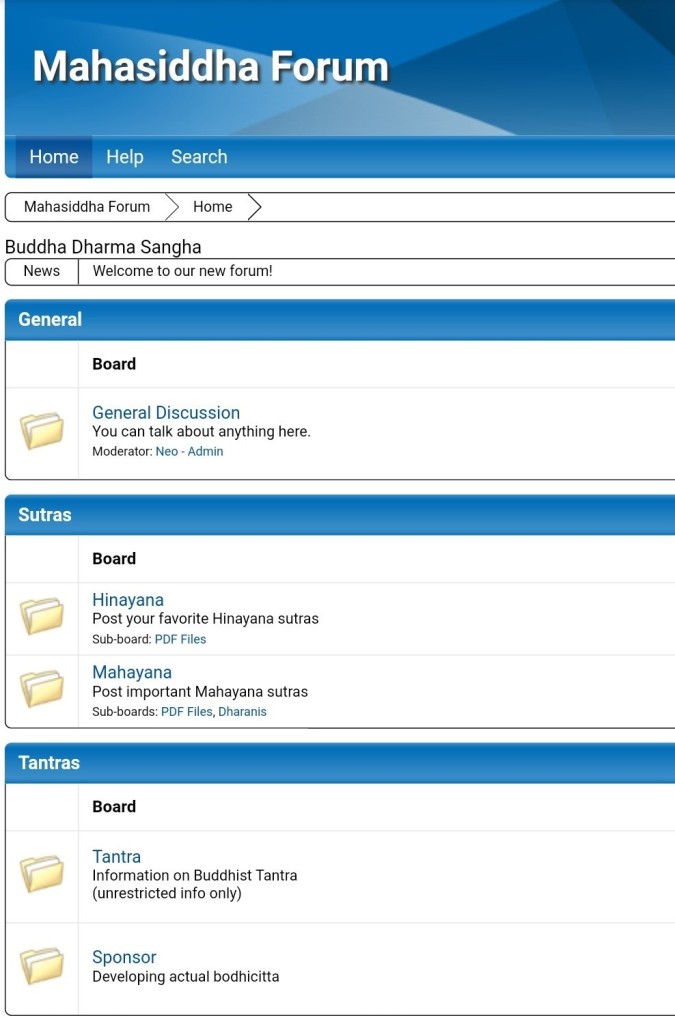Shabkar Tsokdruk Rangdrol — was regarded as an emanation of Milarepa. He was an extraordinary lama, born in Amdo, who spent much of his life in mountain retreats, including three years on the inaccessible island of Tsonying Mahadewa in the middle of Lake Kokonor.

Lake Kokonor in Tibet
Zhabkar handed the following pith instructions to his disciples with the intent that they: “Seek out the thorns of their defects with the eyes of discrimination and remove them.”

Shabkar
Master–from the invisible realm
Look down upon this miserable person!
I’ll point out my own defects
As I’d point out lice with my finger.
I’ll toss my defects out the door
As I’d pull a thorn out of my foot and toss it away.
You, Shabkar–
You obtained a free, well-favored human birth,
You met a lama, the embodiment of all the Buddhas,
You received his profound and vast instructions.
As the result of having listened to the
Dharma and contemplated its meaning,
Your body, speech, and mind should have become tame and serene,
But they didn’t–they got worse!
Your obscuring emotions should have diminished;
But they didn’t–they got worse!
Your mind should have evolved,
But it didn’t–it got worse!
This is what you are:
A sack stuffed with religious wealth and food given by the faithful,
A bull sleeping like a corpse,
A snake filled with hatred,
A bird filled with desire,
A pig filled with stupidity,
A lion filled with pride,
A dog filled with jealousy,
A hungry ghost filled with greed,
A butcher thirsting to inflict torment,
A cannibal reveling in flesh and blood.
Toward the lama–all the Buddhas in one–
You lack the devotion that brings tears to one’s eyes.
Toward your Dharma brothers and sisters
You lack the pure perception to see them as deities.
Toward all beings–each of whom was once your mother–
You lack the compassion that makes one’s hair stand on end.
Toward the vast and profound instructions,
You lack the diligence that spurs one to practice.
Lacking faith and respect,
You are a longtime samaya-breaker.
Lacking pure perception,
You are shameless.
Lacking compassion,
Your heart is rotten.
Lacking meditation practice,
You are utterly lazy.
Not seeing your faults,
You are blind.
Proclaiming others’ faults,
You have a big mouth.
You are a stone anchored in the depths of hell:
You have collected such bad karma,
O dharmaless accumulator of evil.
You are such a traitor,
Betraying the lama who is all the Buddhas of the three times.
You are such a traitor,
Betraying your vajra brothers and sisters who keep pure samaya.
You are such a perverter of the teachings,
Tarnishing the image of the Dharma.
You are such a charlatan,
Outwardly appearing as a practitioner,
Yet acting against the Dharma,
And complaining about the faults of fellow practitioners,
You are the living dead — a zombie, a walking corpse.
Even if you are not possessed by Maras, you are quite mad.
You stuffed dummy, where did you come from?
Man of ill omen, where did you come from?
Look at your ‘diligence’:
Nothing but eating, drinking, and sleeping like a corpse!
Look how you stubbornly refuse to walk toward virtue,
Balking like an exhausted donkey!
Look at how, faster than anyone,
You cascade on toward evil like a waterfall!
You can’t tolerate a single bad word;
Look how your face convulses with rage!
You are a sack of faults and downfalls–
To whom have you given back your vows?
You carry a great weight of evil deeds;
Where are your virtues?
You are a huge bladder of defects;
Who stole all your good qualities?
You have a full load of the eight worldly dharmas;
What have you done with holy Dharma?
You are nothing like a Dharma practitioner–
Aren’t you ashamed of yourself?
Old dog without a tail,
Go out and join the other dogs!
Bull with upper teeth
Go and look for a herd of cattle!
In case you insist on staying,
Will you dare to behave as before?
Man–
If you have any self-respect,
A heart in your chest,
Brains in your head, and
Some sympathy for yourself,
Regret your past actions and
Improve your whole behavior.
It’s time! It’s very late!
See how
All that is born dies,
All that is hoarded runs out,
All that is gathered gets separated,
And everything is without essence:
Meaningless activities should be abandoned.
To practice the essential, divine Dharma,
You must exert yourself in accordance
With the words of your lama and
The Victorious Ones.
O lama and Three Jewels, look upon me compassionately!
My past actions were wrong.
I regret them from the core of my heart,
I confess them, and promise never to commit them again.
Grant your blessings
So that I may act in accord with the Dharma;
Grant your blessings
So that I may observe the Vinaya;
Grant your blessings
So that I may follow the Sutras;
Grant your blessings
So that I may practice according to the Abhidharma;
Grant your blessings
So that I may accomplish the Secret Mantrayana!
I then handed these pith instructions, The Sharp Needle, to my disciples, telling them to seek out the thorns of their defects with the eyes of discrimination, and remove them. Through this they succeeded in extracting all the poisonous thorns of their faults which had produced so much pain. Before long, in pleasant mountain solitudes, they were able to perform the happy dance of a life in harmony with the Dharma.




